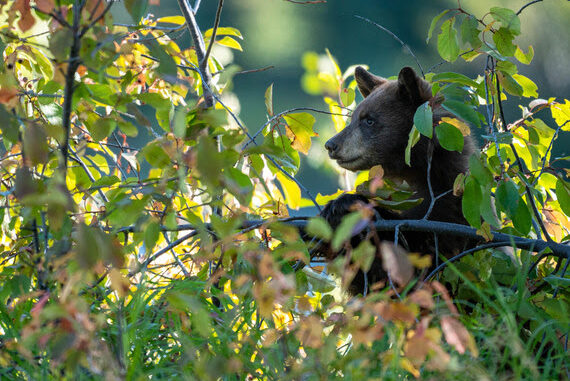
Bears have begun to gather within the Moose-Wilson Corridor to forage on seasonally-abundant, natural foods. We need your help to provide bears ample space and allow them the opportunity to feed as part of their natural behavior.
The Moose-Wilson Corridor is dominated by hawthorn and chokecherry shrubs. The berries provide an important food source for bears who are beginning to enter “hyperphagia,” a time when bears increase their feeding to gain the fat reserves necessary for hibernation. Berry production along the Moose-Wilson Road is significant this year, which presents an abundant natural food source for bears and other wildlife.
To provide bears access to these important food sources, park staff use a management strategy tailored to the uniqueness of the Moose-Wilson Road. Short viewing distances, dense vegetation, and the narrow road prevent a safe way to view bears. To lessen the potential for human-bear conflicts, we ask that all visitors remain in their vehicles and drive along the roadway to view bears.
If you are planning to drive the Moose-Wilson Road, please follow these guidelines to protect natural bear movements and practice safe wildlife viewing:
- Follow direction from park staff managing bear viewing along the roadway.
- Where posted, remain in your vehicle. Observe bears as you drive by slowly.
- In many areas, parking is restricted. Please respect all no-parking zones.
- Respect temporary closures established to provide bears the space they need to forage.
- Slow down. Bears frequently cross the roadway.
- Be patient. Help us provide bear viewing opportunities for everyone while minimizing disturbance of foraging bears.
Park staff will continue to monitor bear activity within the Moose-Wilson Corridor. If bear activity increases, the Moose-Wilson Road may be temporarily closed to public access to protect black and grizzly bears.
Federal regulations require you stay at least 100 yards (91 meters) away from bears and wolves and 25 yards (23 meters) from all other wildlife. Learn more about bears, safe bear viewing, and how to properly use bear spray at go.nps.gov/tetonbears. Please report bear sightings within the park to the nearest visitor center.
